Article from the section “Calendar of work for gardeners and vegetable gardeners”
These recommendations were compiled by experienced agronomists and are intended for beginner gardeners. The article describes in detail what work is performed in the garden, vegetable garden and flower garden in May.
Your garden: work of the month.
At the beginning of May, planting of fruit crops and grafting with cuttings “behind the bark” and “into the cleft” are stopped.
How to feed garden plants in May
Before flowering, feed trees and shrubs with liquid organic or complex mineral fertilizers. Place them in circular grooves 10-15 cm deep, dug at the level of the crown projection or a little closer to the trunk; for shrubs, in a bowl around the bush.
In mid-to-late May, feed the layering of berry bushes with the same solution. Water the soil first and then mulch with organic matter.
When the shoots begin to grow, add a layer of soil (hill up) up to 15 cm, making sure that it is constantly moist. In the fall or next spring, cut the cuttings into pieces and plant them in a permanent place.
After flowering, water your garden plants. You can combine it with additional feeding with infusion of mullein or bird droppings (1:15) + 1 tbsp. spoon of urea.
Don't forget to control garden diseases and pests
During the flowering period, insecticides should not be used, otherwise the bees will die. But there is a way out - biological products. The most effective bioinsecticide (against pests) is lepidocide.
It destroys almost 100 percent of younger caterpillars, moths, leaf rollers and other openly feeding caterpillars. It is safe enough for bees and beneficial insects. It is better to spray in the evening.
In cold and rainy weather during flowering (in the first two days of flowering), it is necessary to protect stone fruits from scab and moniliosis. You can use hom (40 g) or chorus (2-3 g per 10 liters of water).
The same drugs will protect young shoots, leaves, ovaries from perforated spot (clusterosporiasis), coccomycosis and other dangerous diseases. These drugs do not affect pollination processes and ovary formation.
Scab prevention
The most critical period for scab infection is from the pink bud to the complete shedding of the petals.Hom, colloidal sulfur, 1% Bordeaux mixture are effective. If it is rainy and cold, applying these contact fungicides is sufficient.
But in rainy weather, the systemic fungicide skor or strobi is more reliable. Strobe helps even in cases where there are prolonged rains and the temperature drops to 0.5-1 degrees.
How to treat scab if the trees are still sick, read here.
Treating trees with this drug (2 g per 10 liters of water) during the pink bud phase (before the central bud begins to loosen) prevents infection with moniliosis.
But you cannot use the same drug, especially systemic, constantly, because the pathogen becomes addictive and the effectiveness of the drug decreases.
When infected with monilial burn, it is necessary to cut out and burn the diseased shoots - at the first signs of the disease and 2-3 weeks after that.
Some varieties of apple, pear, and berry trees are affected by powdery mildew. Diseased shoots of such trees and bushes are cut out and destroyed, and apparently healthy annual shoots are shortened in May and August.
Against the disease, sulfur-containing preparations (colloidal sulfur, thiovit jet) or infusion are used: rotted straw or hay dust, or leaves (1 part), pour water (3 parts), leave for 3-4 days in a warm place, then 1 part of the infusion is diluted with 3 parts water, filter and spray. Topaz is used only as a last resort.
Be sure to carry out weed control work
During flowering in the garden, you need to dig up the soil and turn over the layer. This will reduce the number of weeds, improve air access to the roots, retain moisture, and also reduce the number of pests remaining in the soil.
Necessary inhibit weed growth, promptly remove them from under the trees.Many of them feed on spider mites, leafhopper larvae, cutworm caterpillars, and meadow moths.
At the end of flowering, caterpillars of the first generation of leaf miner moths hatch, mites spread throughout the crown, and the first wave of summer of codling moth butterflies begins.
If the trees are not sprayed with insecticides (lepidocide), then by the end of flowering a lot of mites may appear. The pear honeydew settles on the pear, on all fruit trees there are colonies of aphids and a mass of ants, lovers of the honeydew secreted by aphids. Sticky belts with ALT glue or ash infusion are used against them.
Fungicides, insecticides and acaricides (sulfur) are used in a tank mixture if it is necessary to protect the garden from a complex of diseases, harmful insects and mites.
A garden infested with Californian scale insects needs to be sprayed with fufanon-nova or N30 (250 g per 10 liters of water). The time of treatment coincides with spraying against the first generation of codling moth: 10-12 days after the start of shedding of anise petals (autumn ripening period - mid-September).
If leafminer moths are widespread, you can use Kinmiks and Inta-Vir for spraying. The caterpillars of these pests are in mines, and fufanon will not affect them. But synthetic pyrethroids increase the threat of tick outbreaks. Therefore, colloidal sulfur (50-80 g) must be added to these preparations.
Against cherry flies and plum moths, 10-14 days after flowering, cherries, plums, and apricots are sprayed with Fufanon-nova.
May concerns of gardeners
Your garden: work of the month
If in April some summer residents could afford to take their time, then in May it is no longer possible to postpone things until later.
We are in a hurry with the crops...
When the street is twenty-five or higher, it is difficult to get healthy shoots of cold-resistant crops: carrots, parsley, onions. Uncovered soil quickly dries out without having time to saturate the seeds with moisture.
If you cover the bed with film, tender seedlings may die from high temperature and humidity. Therefore, despite the fact that May is rushing, we will do everything thoroughly.
We will make seeding furrows in the dug up beds and water them with warm water. It is better to do this in 2-3 steps: water, wait for the water to be absorbed, and water again... We sow seeds at the bottom of the wet furrows.
We try not to sprinkle even the smallest ones in piles, but to throw them one at a time. It’s better to spend more time now, but then we’ll save it, since we won’t need to thin out the seedlings. In addition, we will save seeds.
We fill the furrows with soil from the spaces between the rows, lightly tap them with a rake so that the soil “lays” on the seeds and they do not end up in some kind of air pocket. If there is compost or humus, mulch the surface of the bed or cover it with non-woven material.
It is undesirable to water from above even from a watering can: a crust will form, through which it will be difficult for seedlings to break through. In addition, the compacted top layer promotes rapid evaporation of moisture.
Crop rotation is a necessary condition for success
When choosing beds for sowing seeds and planting seedlings, we take into account the compatibility of crops. Of course, it was necessary to create a crop rotation in winter or even autumn, but if we couldn’t, at least remember in which area tomatoes, peppers, and eggplants grew last year, so as not to again occupy it with nightshades, plant celery in the former carrot bed, not place after cucumbers, zucchini.
“Shuffling” beds on several acres is difficult, but still necessary.Continuous cultivation of crops is fraught with a decrease in yield, accumulation of pests and diseases. Alternation of crops is necessary, even the simplest one, for example, by family.
We grow cruciferous vegetables (cabbage, radishes) after nightshades (peppers, eggplants, potatoes, tomatoes), and umbelliferous plants (carrots, celery, parsnips, dill, parsley) after pumpkin vegetables (cucumbers, zucchini, pumpkin).
After green manure dug up in the spring, it is better to grow seedling crops. Seeds in such beds will have difficulty germinating. After peas, you can plant or sow any vegetables: this is such a benevolent crop.
Good "neighbors"
We will not abandon combined plantings and sowings, taking into account the compatibility of crops. On the outermost row in the eggplant bed you can sow peas, basil, and plant early varieties of white cabbage or kohlrabi.
The proximity of aromatic herbs is favorable for cabbage. The smell of anise, calendula, coriander, mint, dill, and basil disorients pests, of which cabbage has a lot.
The combination of carrots and onions in one bed is considered classic. You can sow carrots along the edge of the garlic bed or, if distance allows, between the rows. Carrots develop slowly at first, so it would benefit from radishes as an intercrop.
Between the cucumber plants grown on a trellis, you can throw a grain of peas or climbing beans. Plant next to tomatoes
- basil
- tagetes (marigolds)
- lemon balm
- borago
There is not much space in country gardens, but you want to have everything - from vegetables for salads, preparations to herbs for flavoring homemade culinary masterpieces.
Planting cucumbers
At the beginning of the month, we sow cucumbers either under temporary cover or in cassettes so that at the stage of cotyledons or one true leaf they can be transplanted into the garden bed. In the middle of the month, as a rule, cucumber seeds germinate well even when sown in open beds.
Cucumbers grow quickly and you must not miss the time to start treatments against their main pests - mites and thrips. The sooner we start spraying with phytoverm, the greater the chance of protecting plants from damage and maintaining their productivity.
In May you can sow everything:
- beans
- corn
- gourds
- aromatic greens
The first days of May is the deadline for digging up green manure in the beds where we plan to plant seedlings of heat-loving crops. When closing green manure, you can add a little urea: nitrogen will help process fresh organic matter faster.
For those who have not yet used green manure on their plots, it will be useful to read the article: “We planted green manure, but what next?”
When placing vegetables on the site, we always try to find a well-lit place for everyone. True, there are few of these in most dachas: sometimes trees cast shadows, sometimes fences or buildings interfere with the sun’s rays.
But let’s not forget that we have plenty of sun in the middle of summer, so most vegetables grow well, even if the sun doesn’t shine on them all day. And in beds that are protected from scorching rays at midday, they feel even better than in well lit from morning to evening.
Just plant plants in such semi-shaded beds a little less frequently than in sunny ones: the bushes will not shade each other and will be well ventilated. The latter circumstance is important for the prevention of fungal diseases.
Planting seedlings
Every year at the end of April - beginning of May, summer residents are concerned with the question: when to plant seedlings?
It all depends on the weather. If it is warm, during the May holidays you can already plant some of the hardened tomato seedlings in open ground. But provide shelter in case of return frosts.
In recent years, frosts, although rare, still occur, especially in low areas. If the weather is good, tomatoes planted in early May will have an advantage over plants planted later.
At what distance to plant tomato seedlings?
We plant determinate varieties of tomatoes every 30-35 cm in a row, retreating the row from the row by 50-60 cm. Indeterminate varieties require a larger feeding area, so we plant them every 60-70 cm in a row, and increase the row spacing to 80-90 cm.
After May 9, we plant seedlings of peppers, eggplants (20-25 cm - distance in a row, 50-60 cm - row spacing), and if the soil warms up enough, then cucumbers (20-35 cm - distance between plants in a row, 70 cm - row spacing).
Helping seedlings adapt
In order for the seedlings to quickly take root and form a powerful root system, to better adapt to changes in weather, night and day temperatures, immediately after planting we spray it with a zircon solution (4 drops of the drug per liter of water).
Zircon treatments are carried out during the flowering of the first, and then the third and fourth clusters. It is better to spray with zircon in the morning or evening, since the drug is not stable in the light.
Potato plantings can also be strengthened with zircon. This is done in the phase of full germination (4 drops per 3 liters of water).
Before planting, seedlings can be immersed in a solution of phytosporin-M for 1-2 hours or watered at the root three days after planting. It makes no sense to give standards, since phytosporin is produced in different formulations (powder, paste, liquid) and each has its own standards.
In warm soil, phytosporin bacteria are activated and begin to suppress fungal and bacterial plant diseases. In addition, phytosporin improves plant immunity and enhances their growth. Preventive spraying of vegetable plants with phytosporin is carried out every 10-15 days.
If we do not neglect such treatments, it is likely that we will not have to resort to chemical fungicides.
You can choose other drugs, for example, extrasol, to prevent diseases and strengthen plant immunity.
Working solutions of extrasol and phytosporin-M can be used to water the plant residues that have accumulated after autumn and spring cleaning of the garden and vegetable garden - so that they quickly turn into compost needed for the soil.
How to feed vegetables in May
At the beginning of the month we will feed the cabbage planted in April. It is better to prepare an organic infusion (mullein, green grass - 1:10, consumption - 0.5 liters per 10 liters of water). For cauliflower and broccoli, which form a rich vegetative mass, the first fertilizing can be supplemented with urea - tbsp. spoon per sq. m.
Summer residents often plant seedlings of tomatoes and peppers in open ground with flower buds. After the plants take root and begin to grow, it is important to help them form a harvest with fertilizing.
We carry out the first one in the flowering phase. Which fertilizer to choose? Many people like to give their vegetables urea: feed them and after a week you can see the results. But “nitrogen” beauty and splendor do not mean health and productivity.
Such plants, having pleased with bright greenery, are in no hurry to produce fruits, become more susceptible to diseases, and pests like them more. The requirements of tomatoes during the flowering phase are best met by fertilizing with an organic infusion (0.5 liters of bird droppings infusion) and superphosphate extract (1-1.5 tbsp.spoons of fertilizer per 10 liters of water).
Summer residents who do not have the opportunity to devote a lot of time to their dachas choose a more economical fertilizing option - complex, organo-mineral fertilizers, the choice of which is now wide.
During the budding and flowering phase, we feed peppers and eggplants: tbsp. a spoonful of complex fertilizer per 10 liters of water or 0.5 liters of organic infusion per 10 liters of water.
Potatoes also need to be supported with fertilizing.
- If we see that its tops are not growing well, we will feed it with an infusion of fermented grass.
- The second fertilizing (during the budding period) can also be done with “free” fertilizer - sprinkle the rows with wood ash (a glass per square meter), loosen and water.
Potatoes will receive the potassium and microelements they need. There is no ash - we give the potatoes potassium sulfate or potato fertilizer (a tablespoon per square meter).
But the onion for feather growth you need to give nitrogen: a teaspoon of urea per 10 liters of water. Opponents of mineral fertilizers can feed the onion bed with an organic infusion of mullein or green grass (1:10, consumption -0.5 l per 20 l).
In May we carry out the second feeding of garlic - 1-2 tbsp. spoon of complex fertilizer per 10 liters of water. We fed garlic with urea in April.
cucumbers at the beginning of flowering, we feed with small doses of mineral fertilizers (a teaspoon of urea, potassium sulfate, superphosphate or a tablespoon of complex fertilizer). Mineral water can be replaced with organic matter: 0.5 liters of mullein infusion per 10 liters of water.
We feed fruiting plants every 7-10 days to stimulate the growth of shoots and the formation of flowers and ovaries on the growth. The concentration of fertilizers should still not be high: a teaspoon of urea and potassium sulfate per 10 liters of water.
At the end of the month, carrots from winter and April crops will also require feeding.You can water young plants with a weak organic infusion (0.5 liters of mullein or bird droppings in 2 buckets of water) or add a teaspoon of urea and a tbsp to the rows. spoon of potassium magnesia per sq. m.
We thin out the onion and carrot crops before feeding them.
Flower growers' work in May
Read what kind of work flower lovers can expect in May on the next page
Other articles in this series:
- Works of gardeners and vegetable gardeners in June
- Works of gardeners, vegetable gardeners and flower growers in July.
- Works of gardeners, gardeners and flower growers in August.
- Works of gardeners, vegetable gardeners and flower growers in September
- Works of gardeners, gardeners and flower growers in October.
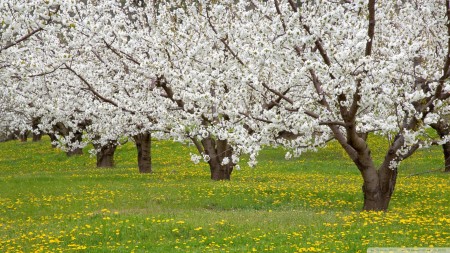
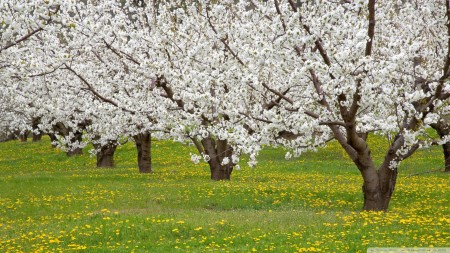
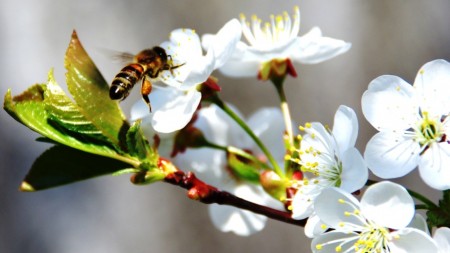
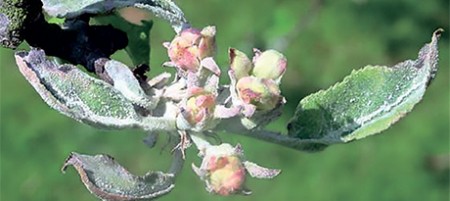
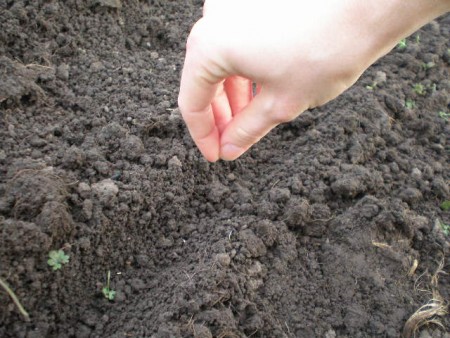
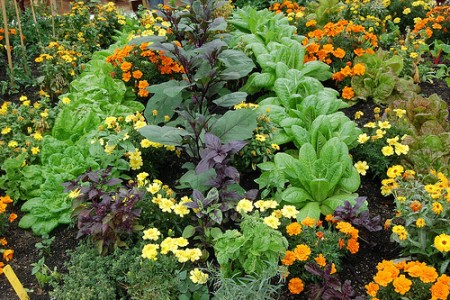
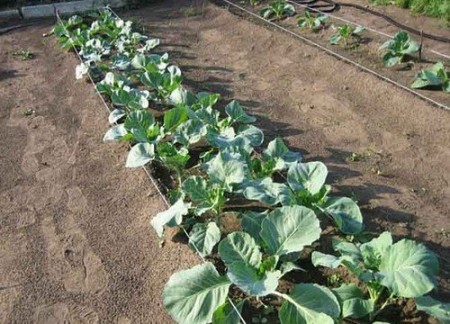
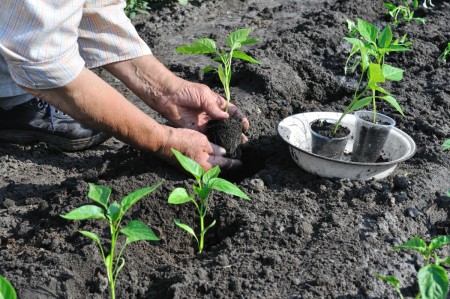
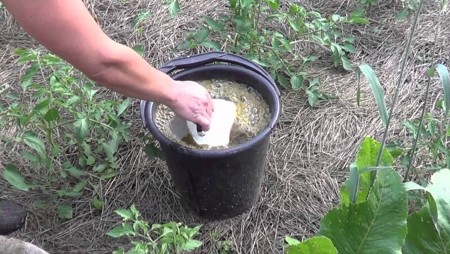
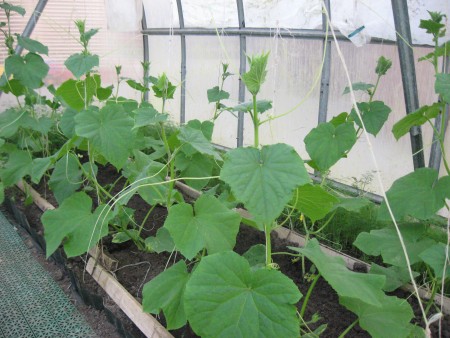

 CUCUMBERS NEVER GET SICK, I'VE BEEN USING ONLY THIS FOR 40 YEARS! I SHARE A SECRET WITH YOU, CUCUMBERS ARE LIKE THE PICTURE!
CUCUMBERS NEVER GET SICK, I'VE BEEN USING ONLY THIS FOR 40 YEARS! I SHARE A SECRET WITH YOU, CUCUMBERS ARE LIKE THE PICTURE! You can dig a bucket of potatoes from each bush. Do you think these are fairy tales? Watch the video
You can dig a bucket of potatoes from each bush. Do you think these are fairy tales? Watch the video
 How our fellow gardeners work in Korea. There is a lot to learn and just fun to watch.
How our fellow gardeners work in Korea. There is a lot to learn and just fun to watch. Eye trainer. The author claims that with daily viewing, vision is restored. They don't charge money for views.
Eye trainer. The author claims that with daily viewing, vision is restored. They don't charge money for views. A 3-ingredient cake recipe in 30 minutes is better than Napoleon. Simple and very tasty.
A 3-ingredient cake recipe in 30 minutes is better than Napoleon. Simple and very tasty. Therapeutic exercises for cervical osteochondrosis. A complete set of exercises.
Therapeutic exercises for cervical osteochondrosis. A complete set of exercises. Which indoor plants match your zodiac sign?
Which indoor plants match your zodiac sign? What about them? Excursion to German dachas.
What about them? Excursion to German dachas.
Thank you!
wonderful article!
And thank you, Natalia, for your feedback.